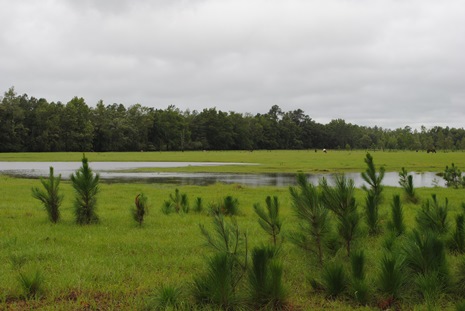by Libbie Johnson | Sep 13, 2013
September generally signals the start of peanut and cotton harvests, but in many counties of northwest Florida late planted soybeans still need continued scouting for disease, insect, and weed pests. Unfortunately, one producer here in the western Florida panhandle...
by Les Harrison | Aug 16, 2013
Yellowstriped armyworms, Spodoptera ornithogalli, have made an appearance in Wakulla County, Florida. While common in the eastern United States, and even as far west as the Rocky Mountains, as a pest its occurrence is limited primarily to the southeastern states. The...

by Les Harrison | Aug 9, 2013
Weeks of consistent above normal rains have filled farm ponds, ditches, swamps and anything else which will hold water. While this is a positive trend for the water table and minimized, if not eliminates, the need for irrigation, there is a down side. The mosquito...
by Josh Thompson | Aug 2, 2013
Earlier this week I visited a farm in Jackson County that had considerable damage from leafhopper insects, a condition usually called hopper-burn. There several different species of leafhoppers that feed on peanut, one of the most common is the potato leafhopper...
by Michael Donahoe | Jul 12, 2013
Cotton aphids are beginning to show up in spots in fields. On plant terminals and young leaves feeding may result in distorted growth which may include stunted plants and rolled or downward cupped leaves. When feeding, cotton aphids secrete a sticky honeydew substance...

by Doug Mayo | Jun 28, 2013
The University of Florida database of fact sheets called EDIS (Electronic Data Information Source) has many publications of interest to farmers and ranchers in Northwest Florida. http://edis.ifas.ufl.edu Each fact sheet has a PDF or printer friendly link in the top...


